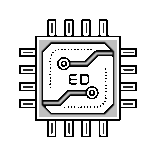I haven't seen anything that points to this. Yes, AMD changed their processing resources this generation, much like they do most generations, but there's no reason they need to offload significantly more work into software - they just need to optimise the existing stuff, much like they (and Nvidia) do most generations. The only change I can tell is the devs/drivers probably ought to try and up the parallellisation to better take advantage of the dual FP32 units we've now got (but this is similar to the work they had to do to take advantage of Nvidia's equivalent dual FP32 in ampere).
It's done in the same revision of hardware as the changes to the resources, you don't wait for the next revision. Much of the changes to caches/registers/schedulers are there for that reason.
All GPUs manage workloads/utilisation in similar ways - AMD, Intel and Nvidia all use SIMD - and have done for many generations: you group stuff together and perform operations on groups of things at the same time. What they do differently, and what changes between generations, is how long those operations take and what things you can do at the same time.
CPUs on the other hand are traditionally not very SIMD - it's very much a GPU design philosophy, but of course, we now have greater SIMD on CPU these days.




 . You guys should be applauding me, i ain't the problem supporting all the bs prices. it's damn torture trying not to waste my money on an upgrade. Sitting here with two consoles that have more gpu power than my PC. This should not be a thing.
. You guys should be applauding me, i ain't the problem supporting all the bs prices. it's damn torture trying not to waste my money on an upgrade. Sitting here with two consoles that have more gpu power than my PC. This should not be a thing.



